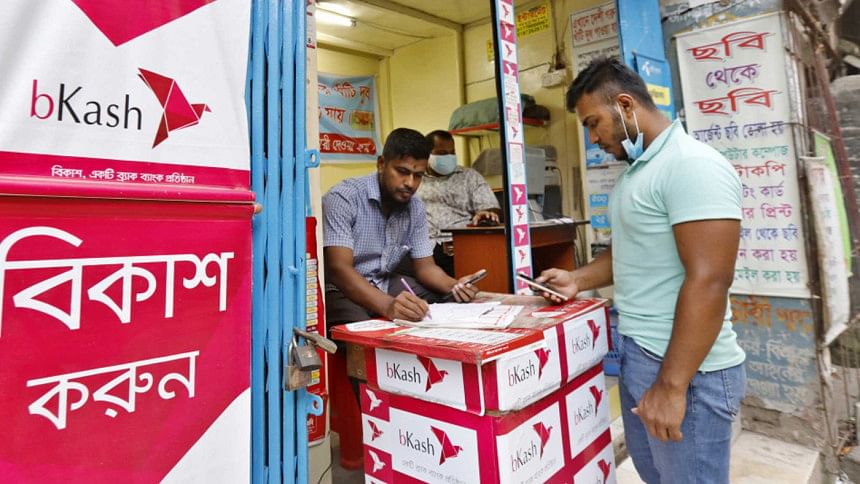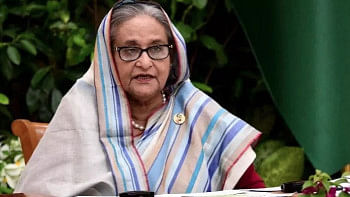How are G2P payments faring in digital Bangladesh?

The government has prioritised digitising public services in Bangladesh since 2009. Digitised government-to-person (G2P) payments reduce the costs, uncertainties, and process delays associated with service delivery. They also reduce the expenses and time spent on receiving payments. A government study in Bangladesh has found that digital cash transfers increased service efficiency and financial inclusion over the years. G2P payments have gained more traction especially during the Covid-19 pandemic, as they require little to no physical interaction.
However, digitising cash transfers has some prerequisites, and certain conditions may reduce their impact. This article shares studies and expert observations on the government's use of mobile financial services (MFS) in various instances.
In June 2020, the government disbursed cash digitally as relief to 3.6 million beneficiaries affected by the pandemic. The digital transfer achieved its core objective—ensuring certainty, speed, and limited to no physical interaction in providing relief. However, the government failed to transfer cash to the originally intended five million people. According to a Prothom Alo article, it found that a significant share of the entries in the initial list of digital relief recipients was problematic. For example, some were duplicate entries, some had included households with significant savings or large capital ownership, and some had social safety net benefits and were not eligible for relief. But funds were available to support an additional 1.4 million entries. The government could have replaced the 1.4 million ineligible households with a similar number of deserving households. However, the money remained unspent, and potentially 1.4 million deserving households were denied the benefit. The government used the same beneficiary list of 3.6 million to transfer the same amount of relief in 2021 and, again, did not take any initiative to include the 1.4 million potential beneficiaries.
Creating and maintaining an updated list of deserving beneficiaries, and transferring cash or providing services accordingly, require strong institutional capacity and an enabling political environment. The process cannot bypass the influence of local political actors, who frequently try to add their preferred people to the list irrespective of eligibility. Thus, digitisation cannot solve the problem of political intervention in beneficiary selection, nor can it improve governance.
Bangladesh lacks an updated, correct, and disaggregated national database to distribute different types of support. The government prepared a ward-level beneficiary list at the beginning of the lockdown in March 2020. However, those lists have not been used or digitised afterwards. To better target the beneficiaries of social safety net programmes and emergency humanitarian assistance, the government took up a beneficiary listing project in 2013, worth Tk 727 crore. But it has not seen light in the last eight years.
Another government programme incorporating MFS is the Primary Education Stipends Project (PESP) Phase 3. It makes mobile money payments to the mothers of around 13.7 million registered elementary level students. Instead of selecting students from the poorest households meeting specific criteria, as is mandated, the programme (between 2015-16 and 2021) has included almost all primary students in the beneficiaries list, except a few students with poor results or low attendance.
According to recent research, PESP Phase 3 has been successful in some key respects. It has a solid database of all students. By providing stipends to most students, it has eliminated the contentious politics of beneficiary management, limiting the influence of weak state capacity on its execution. Furthermore, it has restricted the opportunities for "leakage" and corruption by replacing the role of local actors with technology. Despite its relative success, however, we cannot learn much from PESP Phase 3 about selecting targeted beneficiaries as the project took a blanket approach.
Additionally, like other MFS schemes, PESP Phase 3 has tried to reduce the role of local actors (like teachers, bureaucrats, and local elites) in the beneficiary selection process. By doing so, it has removed those who previously provided information on deserving candidates or worked as important links for conveying the complaints of beneficiaries to authorities. Rural mothers—often with little to no knowledge and no access to smart devices—face difficulty collecting cash and reporting grievances in this system. The procedures in PESP for addressing grievances and infrastructure for information flows were found to be inadequate for the beneficiaries.
Alongside relief and stipends, the social safety net (SSN) programmes involving cash distribution have also come under G2P payments since 2019. The SSN programmes, too, suffer from poor beneficiary targeting. According to the Household Income and Expenditure Survey (HIES) data from 2016, the exclusion error for SSN programmes stood at 71 percent, which means that a large segment of deserving population was outside the SSN coverage. The inclusion error was 46.5 percent, meaning nearly half of the population receiving the budget was ineligible.
There is limited evidence on the impact of G2P payments in social protection programmes. Still, based on observations in other sectors such as relief and PESP, it is clearly essential to maintain an updated, robust central database of the poor and vulnerable non-poor—i.e. those above but close to the poverty line. Authorities affiliated with the database creation need to be held accountable for such a long delay. Many experts have suggested forming a centralised government organisation for preparing and maintaining a central database covering multiple programmes.
If the government had made good use of the National ID card in the targeting and listing exercises, it could have been effective, as India has done with its Aadhar card and South Africa with its biometric identification.
An important takeaway from the relief and PESP experiences is that technology will never fully compensate for governance problems that obstruct programme management. Furthermore, technological processes may also become exclusionary without the citizens' digital and financial literacy.
Digital cash transfers have resulted in public-private partnerships in some major areas for the government. The services of bKash, Nagad, SureCash, and Rocket have been used for various government programmes. Since MFS services are relatively new and will continue to expand, proper incentives for private partners need to be ensured. Equal opportunities in a competitive environment need to be ensured for all service providers seeking work.
The vision of "Digital Bangladesh" is a priority for the current government and MFS services have been largely effective and essential in this regard. However, identifying and addressing the real-life constraints of digitisation is essential for designing digital systems that work.
Rafsanul Hoque is a research associate and Redwanul Hoq is a research intern at the Brac Institute of Governance and Development (BIGD), Brac University.

 For all latest news, follow The Daily Star's Google News channel.
For all latest news, follow The Daily Star's Google News channel. 



Comments